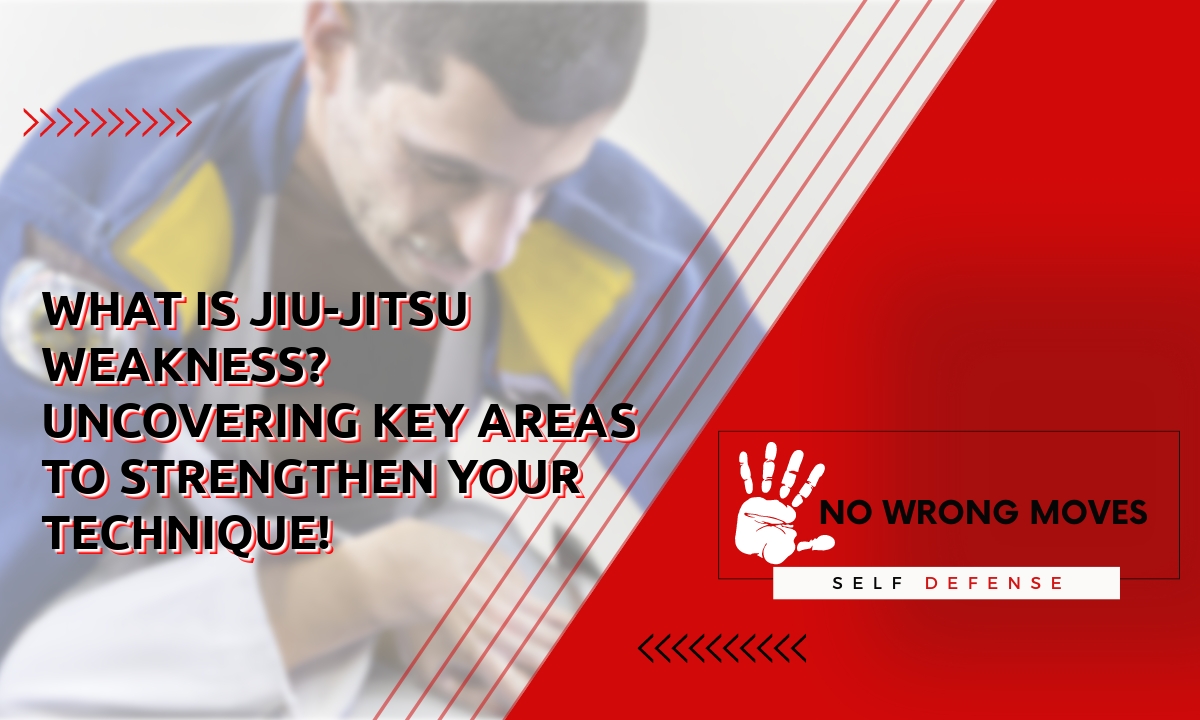
Understanding the Weaknesses of Jiu-Jitsu

First and foremost, there’s the lack of striking.
While BJJ practitioners may be proficient in ground fighting, they don’t often learn how to defend against punches or kicks.
This means that if they find themselves in a situation where an opponent is using strikes, they won’t necessarily know how to handle it.
This can leave them vulnerable to attack – especially when facing someone who has a more well-rounded martial arts background.
Another weakness for those practicing jiu-jitsu is their reliance on proper technique.
Because BJJ focuses so heavily on submission holds and joint locks, it requires skillful execution from its practitioners in order for them to be successful.
If someone fails to use the correct form or applies too much pressure at once, then the move will likely fail – leaving them exposed and open for counterattack.
Furthermore, even though some moves are effective one time, that doesn't mean that it will always work out as planned. Opponents can adapt quickly, which can cause issues with certain strategies over time.
Finally, another potential issue with BJJ lies in its physical demands. Due to all of the grappling involved during training sessions (and matches), it takes a significant toll on both body and mind, making recovery times longer than in other martial arts styles, like muay Thai or kickboxing (which rely more upon striking).
The physicality involved also means that unless you have proper strength conditioning beforehand, your performance might suffer greatly depending on the intensity of your workouts or matches compared to your opponent's levels of preparedness.
Ultimately, this can lead one to having difficulty in besting their foe during both competitions and practice bouts alike – resulting in failure and frustration along the way, especially if necessary precautionary measures aren't taken beforehand.
Lack Of Striking Training
In order to really harness the power of your stand-up game, training with a partner is essential.
In addition to sparring, you can practice strikes on heavy bags or pads, which will help you increase speed and strength as well as develop accuracy and technique.
Footwork drills are also important for developing agility and movement when it comes to avoiding punch combinations or kicks from an opponent. This is especially true in MMA, where speed and smarts are a must if one wishes to survive a fight.
Furthermore, mastering proper body mechanics, such as hip rotation when throwing punches, is vital when it comes time to deliver powerful blows while still remaining balanced in-between attacks.
Finally, practicing visualization exercises is often key for improving striking proficiency. In these types of exercises, one imagines themselves going up against opponents.
Instead of actually sparring, however, they focus on properly executing techniques while visualizing their body movements, like punch placement and kick trajectories, along with practicing correct breathing techniques used during combat situations.
Combining these practices together will provide you with a great opportunity for growth, both mentally and physically, thus turning you into a more well-rounded fighter overall.
Vulnerable To Takedowns & Takedown Defense

Takedowns are a commonly used technique in martial arts.
Although they can be risky, depending on the skill of both combatants, they often offer better control over an opponent than mere strikes alone.
To address this issue and protect against takedowns, practitioners must develop proper takedown defense. They must do this while also developing strong grips and understanding leverage points, to prevent themselves being held down too tightly.
This requires a combination of strategies, including bridging outwards while simultaneously gripping onto their opponent's clothing, then creating space between one's body weight and their opponent's body weight.
To further prepare for takedowns, wrestling drills should be incorporated into regular practice sessions. Make sure that they involve taking falls efficiently, but still safely.
This helps increase confidence levels when facing larger opponents, as it increases the ability to control leverage points appropriately during physical confrontations.
Additionally, developing good defensive habits is also important. This way, if someone does attempt a takedown, then there is less of a chance of them succeeding, since you'll have greater awareness and will recognize those attempts early enough to mount an effective counterattack.
In conclusion, preventing or defending against takedowns requires more than just learning technique.
It involves building strength from within through repetition, which then translates into improved confidence levels when faced with situations where one may have to defend themselves physically. In the end, this increases the chances of emerging victorious, even against larger attackers.
Position Control & Escaping Holds

This kind of practice develops ability think on feet during live rolls as well create awareness where/when certain escape opportunities present themselves.
Position control is an integral part of success in grappling-based sports, providing grapplers with the opportunity to attack their opponents through submission holds and locks or to set up more advantageous positions from which further attacks can be made without risking overexposure.
It involves learning a number of movement patterns along with understanding positional hierarchy principles associated within various exchanges.
For example, guard passing sequences such as side passes and knee slices followed by proper posturing once completing the pass in order to maintain top control without being reversed quickly.
In addition, escaping certain holds is a crucial aspect of mastering jiujitsu and so regular drills pertaining to particular hold types should form part of one's weekly curriculum in order for familiar responses to be available when needed; examples include collar chokes, armbars, triangle choke set ups etc.
This type of drill focuses on repetition until specific movements become second nature for practitioners making them much harder for opponents to counter in surprise scenarios that may arise according to the situation at hand.
This kind of practice helps develop one's ability think on their feet during live rolls while also creating an awareness as to where or when certain escape opportunities exist.
[author-box-jpx-fitness]
